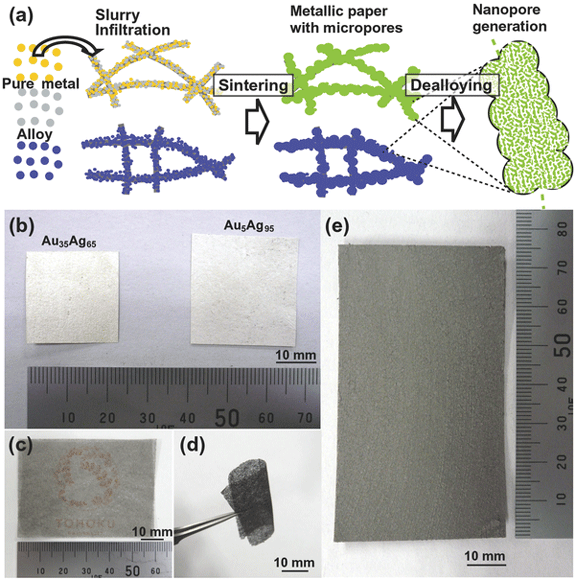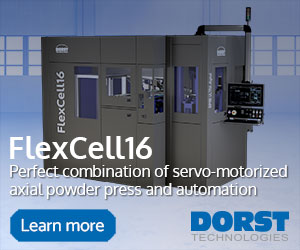PM process used to produce nanoporous metal papers for advanced electrodes
August 26, 2015
A novel method capable of mass producing scalable hierarchical porous electrodes has been developed as part of a research project sponsored by the Japan Science and Technology Agency’s (JSTA) PRESTO programme. The new process combines Powder Metallurgy and dealloying techniques to create hierarchical porous electrodes of Au–Ag and Ni–Mn using Japanese “Washi” paper as a template.
The process has been developed through joint research by Professor Takeshi Fujita and colleagues at the WPI Advanced Institute for Materials Research, Tohoku University, Prof. Chen at the State Key Laboratory of Metal Matric Composites – Shanghai Jiao Tong University (China), and also Y. Kanoko and O. Iwatsu at Taisei-Kogyo Co Ltd, in Neyagawa, Osaka, a company specialising in the development and production of porous and Metal Injection Moulded components. The results of the research to date were published in Advanced Science, No.8, June 2015.
The researchers state that they were able to produce a bimodal Au-Ag porous structure from metallized papers via one-step dealloying, and also the first ever trimodal porous structure through the two-step dealloying of Au-Ag. They state that from an economic point of view the hierarchical nanoporous NiMn electrode created by one-step dealloying provides superior areal capacitance with long-lived cyclability, making the new material well suited for use in high performance oxygen evolution reaction (OER) activity.
The process described (see Fig. 1a) involves the use of pure and alloyed powders produced by water atomisation and screening to <5 µm particle size. A template material consisting of cellulose fibres (<50 µm in diameter) which is otherwise known as Japanese ‘Washi’ paper, is then infiltrated with a slurry of metal powder and water-soluble binder; capillary action helps to ensure that the entire surface of the template is covered.
During sintering at high temperature, the template material and carbon-based binder are decomposed, and the remaining metal powder consolidates to form ultrathin microporous sheet. Microscale porosity can be defined in the sintered porous texture. If separate metallic elements are used, for example Au and Ag, then a solid solution can be created in the sintered sheet.
Subsequent one-step dealloying allows the less noble elements to be etched away thereby creating nanoscale pores. In the case of NiMn one-step dealloying resulted in a nanostructure comprising complex oxides of nickel hydrate – Ni(OH)2 – and sheet like manganese oxide – MnOx as well as unoxidized Ni.
The new process is said to be easily scaled up to achieve high output of advanced electrodes.

Fig. 1a Schematic of the process for producing hierarchical porous structures by sintering a slurry of
metal powder and water soluble binder on a paper sheet;
Fig. 1b example of a bimodal porous AuAg sheet prior to alloying,
and Figs c-e show both thick and thin Ni30Mn70 alloy sheets. (From paper: Nanoporous Metal
Papers for Scalable Hierarchical Electrode, by T. Fujita, etal.
Advance Science, Vol.2, No.8, 2015, 1500086, 6 pages)















